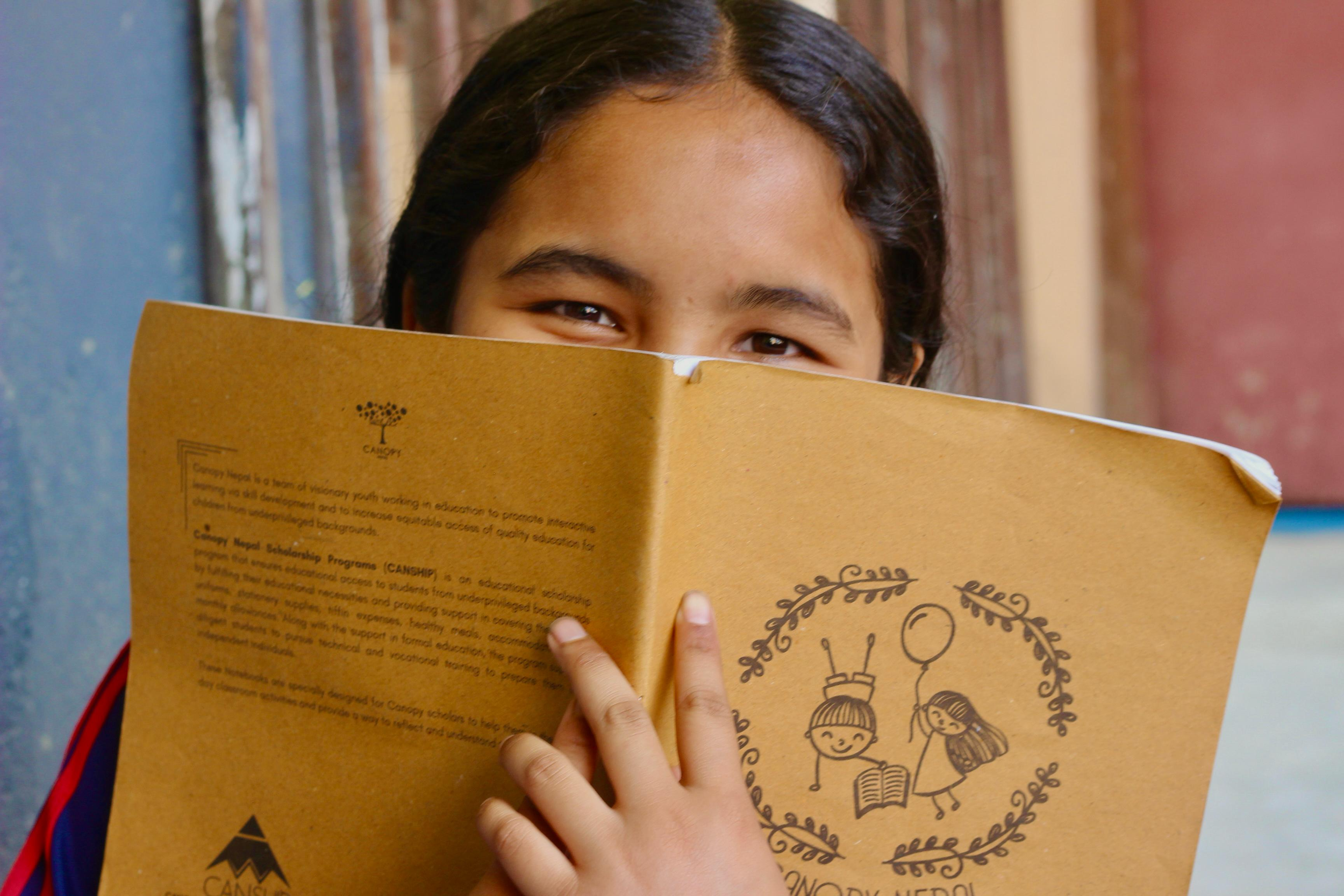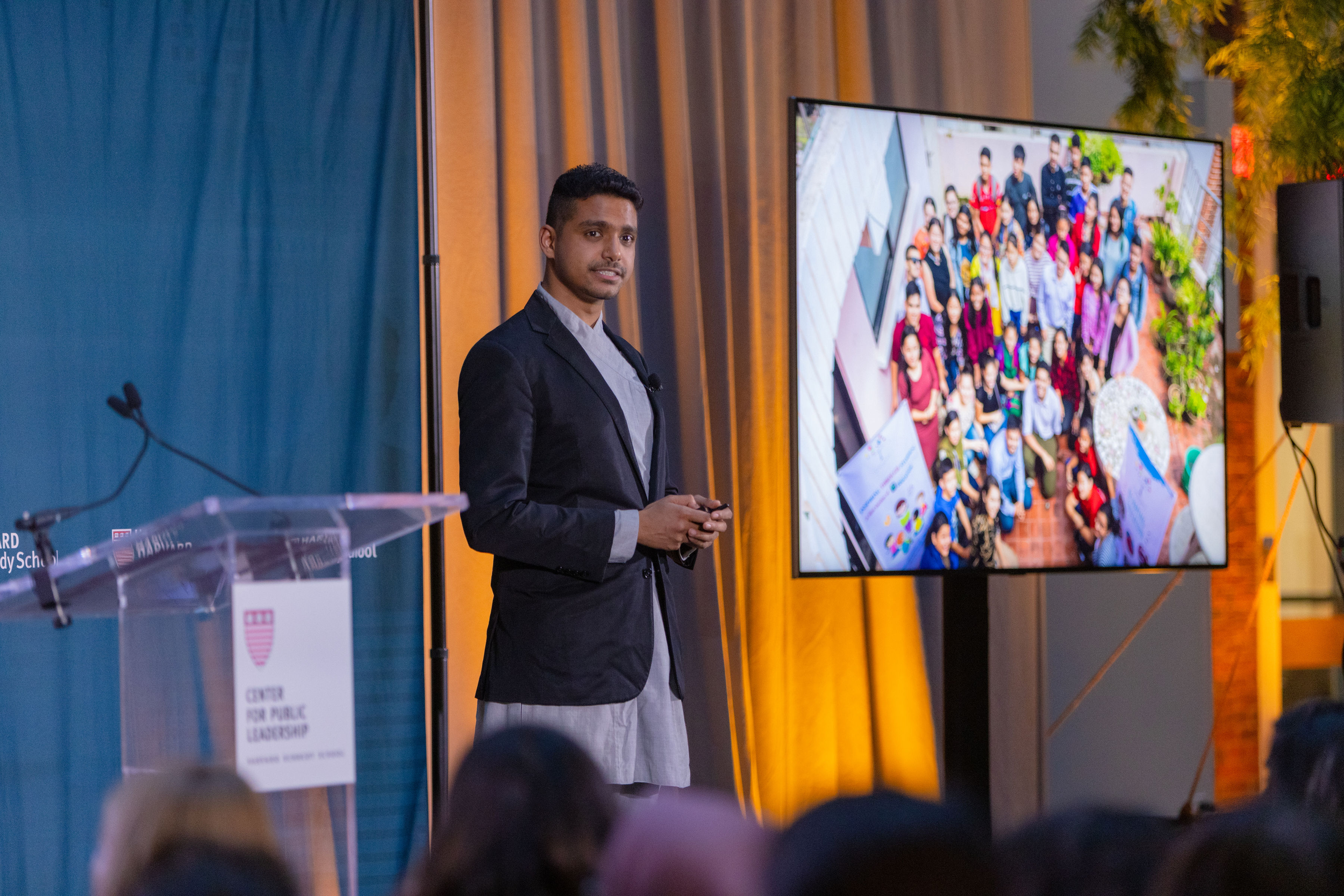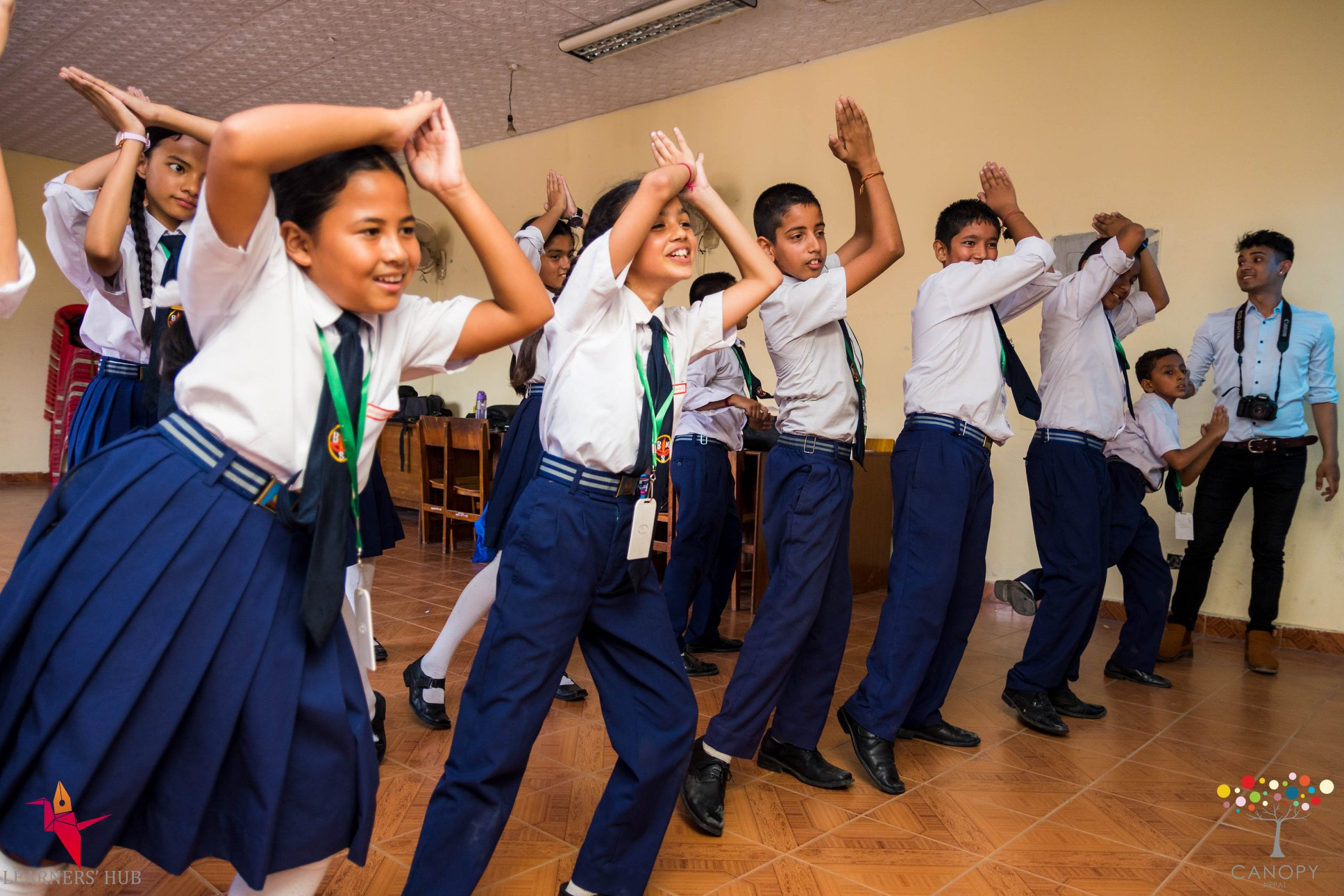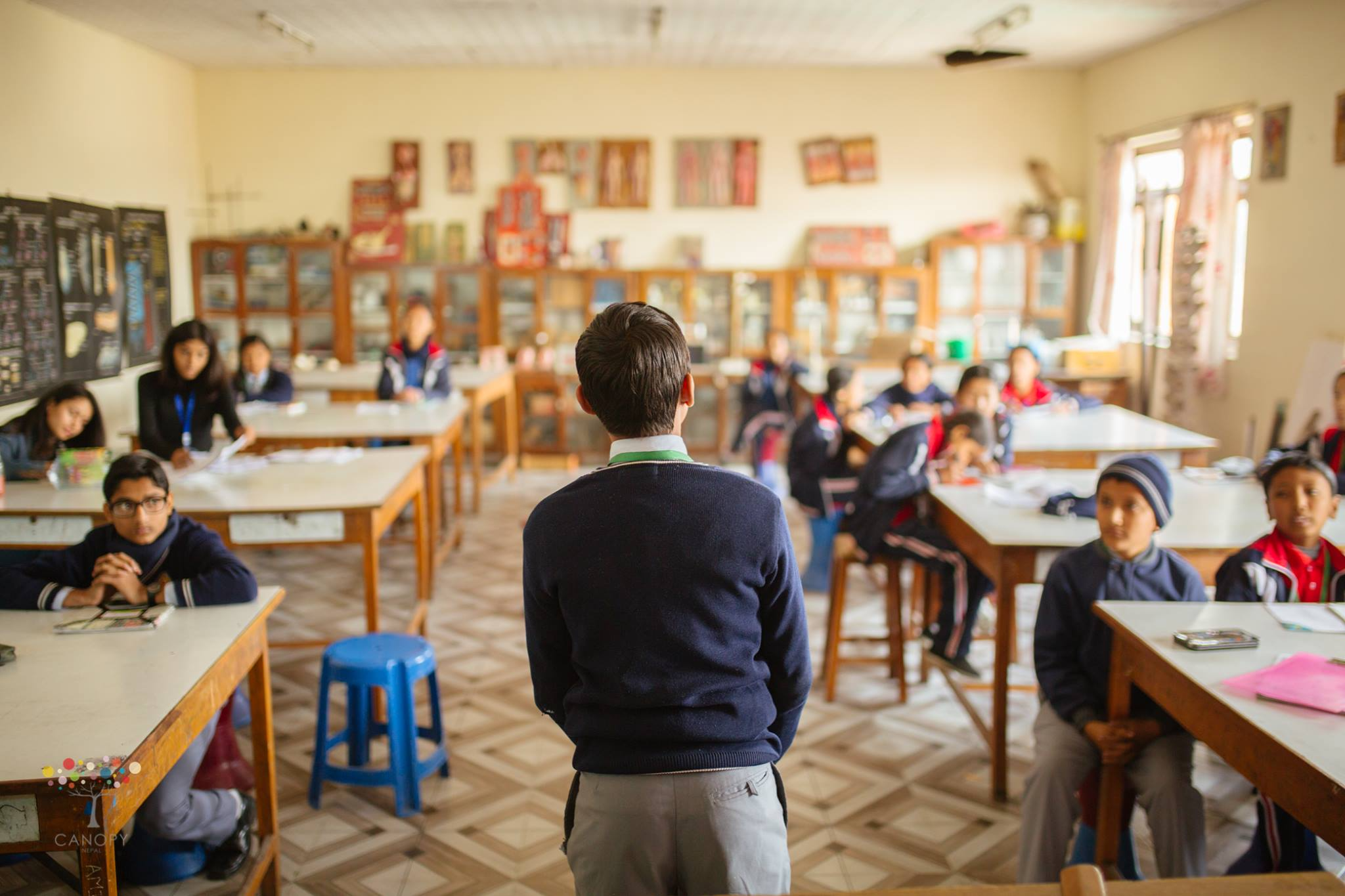Mohit Rauniyar On Reimagining Education To Enhance Student Engagement Through Storytelling
Mohit Rauniyar is the Founder of Canopy Nepal, an education nonprofit dedicated to transforming learning and reducing dropout rates through scholarships and storytelling-based curricula.
Since 2015, he has led a team that has reached over 23,000 students across 245 schools, worked with local governments to embed creative, student-centered approaches into the public education system, and expanded internationally with chapters in the US and France.
With 15 years of experience in education and a master’s degree from the Harvard Graduate School of Education, Mohit has been recognized by leading institutions, including Harvard's Cheng Fellowship, Milken-Penn GSE, Gratitude Network, HundrED, and the Harvard Innovation Labs for his leadership and innovation.
His work focuses on advancing access, equity, and creativity in classrooms, guided by the belief that every child deserves an education that inspires them to dream, create, and belong.
Mohit discusses implementing creativity, storytelling, and student-centred learning in classrooms to reduce dropout rates in schools, and the potential for accessible education opportunities to uplift and empower communities.
Highlights from the interview (listen to the podcast for full details)
[Indio Myles] - To start off, can you please share a bit about your background and what led you to work in education, social enterprise, and nonprofits?
[Mohit Rauniyar] - Namaste everybody, my name is Mohit. To give you a bit of background, I grew up in Nepal. Nepal is a beautiful country, but if you look at the education system, it’s quite frustrating.
My journey began as a student who was absolutely disillusioned with an education system that left no space for creativity or critical thinking. Even asking questions was frowned upon, as it was seen as challenging the teacher’s authority.
Interestingly, I started working when I was 16, and that marked a turning point for me. I shifted from being a student to becoming an educator, and I began working in public schools and started to understand how the system functioned, what education looked like, and what teachers were going through.
The first organisation I volunteered with was the Nepali Children’s Education Project Canada (NCEP Canada), which focused on creating access to education for children who couldn’t afford to go to school. This was back in 2010 (15 years ago now), and it marked my entry into the school system and helped me understand the broader issues within it.
Since then, I’ve worked across a range of organisations, engaging in everything from teacher training to curriculum design to teaching itself. One of the most exciting moments in my journey was teaching for three years at Bloom Nepal School, which was Nepal’s first and only passion-based learning school. From 9:00 AM to 3:00 PM we followed the government’s curriculum, and after that, we supported students in exploring their personal passions. That’s where we focused our efforts.
After spending five years working across different areas in education, trying to understand the root causes of its challenges, I realised instead of just complaining, I needed to become part of the solution. That’s what led to the idea of Canopy.
About 10 years ago, I founded Canopy Nepal with the goal of creating accessible education for students who were dropping out of school. Our focus was on using storytelling to improve the overall quality of classroom experiences. That’s a little bit about my background in education.
As Founder of Canopy Nepal, can you please share more about this organisation and how it is transforming education and reducing dropout rates through creative approaches?
We began in 2015 as a very small, youth-led initiative. We started as just a group of passionate people who cared deeply about changing something in the education system. Fast forward to today, and Canopy Nepal has grown into what is now almost a national-level non-profit.
To give a quick overview, our mission is to make education more accessible, equitable, and engaging. The core issue we’re addressing is the high dropout rate within Nepal’s education system. For context, around 73% of students drop out between primary and secondary education. That’s a huge number. To tackle this, the first thing we do is identify students who are at risk of dropping out and bring them back into classrooms through our scholarship program.
It’s not just about access, and we take a holistic approach. We support students with resources beyond the classroom, such as mental wellbeing initiatives and social-emotional learning. We also work closely with teachers and parents to foster a more complete environment for students to learn, behave, and engage in school.
Complementing this is our storytelling program, Katha Bunaun, which uses storytelling as a tool to help students become more expressive, confident, critical thinkers. This builds their connection to learning and makes them more likely to stay in school.
As part of our growth, we’ve also started collaborating with local governments, working toward embedding our storytelling program into the national curriculum. This partnership is helping to institutionalise the change we’re creating and scale the impact across the country.
Why do you believe storytelling is such a powerful tool in learning, and how have you seen it shift student engagement and outcomes?
Even from my own experience as a teacher or educator in the classroom, I realised students perform best when they feel seen, heard, and valued. There’s absolutely no doubt storytelling is a powerful tool for creating this environment as it brings all of those elements together. We use storytelling to connect students’ emotions and understanding to real and relatable experiences.
The Nepali education system is very textbook-heavy, but we integrate storytelling to spark curiosity and joy. It’s helping students become more critical about what they’re learning. They’re starting to empathise more and are developing better communication skills. This is in contrast to a traditional focus on rote memorisation, which is still a dominant part of our system.
Through our Katha Bunaun program, which translates to “weaving stories” in English, students are encouraged to share their own stories. These can be about identity, community, or personal challenges. This process builds their confidence and gives them a sense of belonging.
We’ve seen around a 77% increase in classroom attendance through our program. We’ve also observed a 54% improvement in core skills such as reading, writing, and critical thinking. Students who once saw the curriculum as boring now have a space for self-expression and collaboration, not only with peers but also with teachers. They’re beginning to approach education from a problem-solving perspective.
These are elements that are simply not available in traditional classroom settings. This is how we’re using storytelling to embed and enhance the curriculum so students can genuinely thrive.
What advice would you give to a nonprofit or entrepreneur seeking to work with or collaborate government to elevate their impact?
To be very honest, it’s a difficult question because it took us eight years to really figure out working with the government. We took our time: we didn’t want to jump into partnerships too early, even though we saw a lot of value in them. Initially, our focus was on perfecting our storytelling model.
We piloted our program in a wide range of school environments. From the most well-resourced schools in Kathmandu to those in the most remote and under-resourced areas of Nepal, we wanted to see if our curriculum and program would hold up and be effective regardless of the setting. My first piece of advice to any entrepreneur would be to clearly identify a problem that’s persisting in society. Once you have that, the next step is to test your idea.
For us at Canopy, our hypothesis was that storytelling could support children in learning better. That idea came from personal experience. I grew up listening to many stories from my grandmother and my mother, and I realised how much they helped spark my creativity and supported my learning. I could clearly see how that storytelling exposure was positively impacting my academic performance.
For any entrepreneur or nonprofit founder looking to work with the government, start by deeply understanding the problem you’re trying to solve, test a clear hypothesis, and spend time validating it through real-world application before seeking to scale or collaborate with systems.
It’s essential to stick with your hypothesis of what a possible solution could look like, and then spend real time with the community. If you’re working in an education initiative, that means spending time with teachers, community members, and even municipal leaders. Grassroots engagement is critical.
One of the advantages we had when starting Canopy was five years of experience working in the education sector. Public schools, teachers, and community leaders already understood what I was trying to do and what the community truly needed.
Whatever solution you’re developing, it has to be co-designed with the community. Once you have that, the next step is to understand what government and institutions are trying to achieve. Governments have their own goals and priorities. If you’re working in education, figure out what their main priorities are and determine whether your solution overlaps with them. If it does, and you have pilot data and success stories to back it up, you can confidently approach the government and start that conversation.
As a social entrepreneur, in essence you’re doing three things: first, you’re solving a deep-rooted societal problem; second, you’re working in partnership with the community; and third, you’re aligning your solution with government priorities.
When all three of those things come together, there’s very little reason for anyone to say no. You’re offering a proven solution, supported locally, that helps meet a shared objective. That creates an incredibly strong foundation and ecosystem for working with the government.
You’ve expanded Canopy Nepal internationally with your organisation, which is a huge achievement. What challenges or lessons would you share with social entrepreneurs from this journey?
Before we even thought about expanding internationally, we waited a long time. Our model is quite unique, because generally, organisations outside Nepal grow and then open a chapter here to create impact. We did the reverse. We started in Nepal and only later began expanding internationally. I think that’s a very interesting and rare model, and I haven’t come across anyone else who’s done it that way.
It was extremely difficult. When we looked around for guidance or examples to replicate, there simply weren’t any. But now that we’ve been through it, I’m more than happy to support others who want to do something similar.
Even before reaching that international stage, one of the biggest challenges was getting people (especially teachers and schools) to trust a 19-year-old who wanted to create change in the education system. Our team was very young, and convincing people that storytelling mattered, and that young people could actually bring about change, was a huge hurdle.
Earning trust was our first battle. The second was helping parents, students, and educators see the value of storytelling. In Nepal, education is traditionally equated with scores, percentages, and grades. The focus is entirely on core academic subjects: math, science, social studies, English, and Nepali.
When we introduced storytelling, the immediate reaction was, “How is this going to help improve grades?” When I explained that while we weren’t directly teaching the academic subjects, we were building a skillset that would improve academic outcomes, it was hard to gain that initial buy-in.
A major challenge for us was creating the evidence base through researching our program, developing strong metrics, and proving that storytelling could improve student performance. Only then did we begin to gain the trust we needed to scale, and eventually, expand beyond Nepal.
A critical part of the battle was getting people to truly understand the importance of storytelling. Many dismissed it as “just reading a story and answering a few comprehension questions,” and assumed it had no real value. But storytelling is embedded in all parts of life, from answering a simple question, to writing a college application, to delivering a TED talk. It’s fundamental. People just didn’t recognise that, and shifting that mindset was a major challenge.
Another big hurdle we faced, especially when expanding internationally, was navigating legal processes. Running a nonprofit in Nepal is one thing, but expanding to countries like the United States and France comes with layers of bureaucracy, unfamiliar legal structures, and regulatory requirements. That was tough to manage, especially as foreigners to those systems.
We had to figure out how to properly register as a charity, ensure full compliance, and do it all on a limited budget. We deliberately avoided taking the easier route of hiring expensive lawyers, choosing instead to allocate our resources directly to program delivery. Researching and understanding those legal frameworks ourselves was a big undertaking.
Lastly, I have to mention fundraising as something that has been a constant challenge. The way we’re aiming to expand and scale Canopy Nepal requires significant resources. From building a strong team to improving our programs, conducting monitoring and evaluation, and covering legal and operational costs, funding underpins it all.
Recent global shifts have made this even harder. From the closure of USAID funding to political upheavals in Nepal and the lingering after effects of COVID, many donors pulled out, and the international community became more cautious about investing in countries like Nepal. These were major challenges, but just a few of many we’ve had to navigate on this journey.
What advice would you give to aspiring changemakers who want to use creativity and innovation to make education more inclusive and inspiring?
My advice, simply put, is that having a clear vision is absolutely essential. If you’re planning to use tools like storytelling or creativity in your work, you need to be clear about what exactly you want to achieve. Are you aiming to work in just one community, across an entire country, or even a continent? You have to know what you want to do, where you want to do it, and who is going to lead that work.
One of Canopy’s greatest strengths over the past decade has been our clarity of vision. From the start, we had a strong commitment to incorporating storytelling in classrooms, and we’ve stayed true to that. Because of that focus, we’ve rarely felt lost or unsure about our direction. That clarity helped us grow.
For young or aspiring changemakers, I’d say start small. You don’t need to make a splash by working with 100 communities or schools in your first year. You can begin with one school, one classroom, or even one student. But whatever you do, be consistent. If you start with one student, aim for two students in two months, three in three months. Growth through consistency matters far more than starting big.
Another point I’d make is about the word “innovation”. Innovation has become a bit of a buzzword. My advice is not to chase trends or jargon. Focus on solving real problems that genuinely matter to you. Listen carefully to the people you’re trying to serve, whether that’s students, teachers, or health workers. Let their needs guide your design process, because that’s how you create meaningful, relevant solutions.
Finally, stay local. The local context is absolutely crucial. Without grounding your work in the realities of the communities you serve, it’s very difficult to build anything that lasts or truly works.
What inspiring projects or initiatives have you come across recently creating a positive impact?
There are hundreds that come to mind, but in terms of scale, one model that really stands out is the Teach For model. That includes Teach For All, Teach For America, and especially Teach For Nepal, which has been doing phenomenal work here.
Another local organisation I admire is Carcana Sumua, which is focused on STEM education. They’re doing incredible work by introducing hands-on learning experiences to school kids, which is so valuable.
A good friend of mine from India, Ananya, is doing a project with an organisation called Paint It Red. They use gamified and inclusive content to teach body literacy, and I think it’s such a powerful and necessary initiative.
There’s also a young changemaker from Brazil, Eduardo, who was part of my fellowship. He runs Young Peace Builders, a non-profit focused on preventing school violence and fostering student leadership. His work is truly inspiring.
I can’t help but give a shout-out to the Global Shapers community, especially the Kathmandu hub, which I’m part of. They’re doing amazing work across a range of areas, including climate change, mental health, and preserving cultural heritage.
These are just a few examples, but honestly, if we had more time, I could easily list 95 more!
To finish off, what books or resources would you recommend to our audience?
One book that always blows my mind is Animal Farm by George Orwell. It’s one of the simplest yet most powerful books I’ve read. I constantly go back to it and wonder how Orwell managed to pack such deep concepts into just 90 pages and create the impact he did. It’s a timeless read that I highly recommend.
A great resource I’d also recommend is the Stanford Social Innovation Review (SSIR). They share valuable insights on leadership, social innovation, and systemic change, topics that are incredibly relevant for anyone working in this space.
Lastly, there’s a podcast called The Social Ideas Podcast, run by the University of Cambridge. It offers a creative and thought-provoking lens on innovation and social change, and I’ve found it to be a rich source of inspiration.
That’s one recommendation in each format (a book, a journal, and a podcast) all offering unique insights and ideas around creativity and impact.










